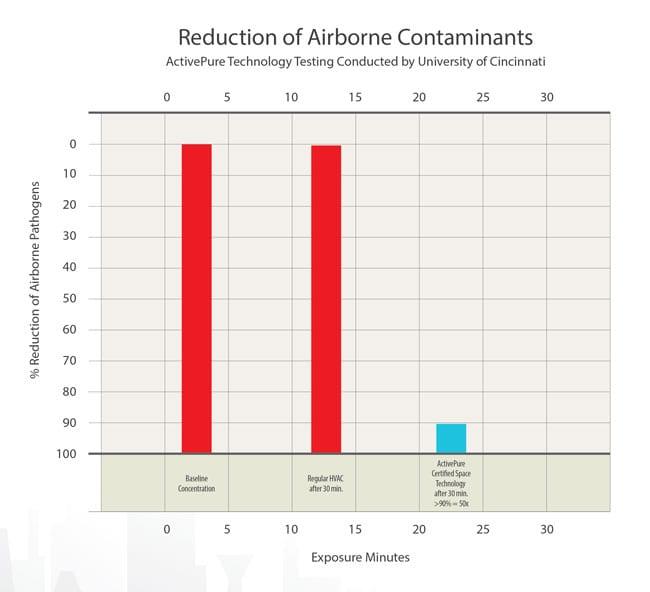The world today is more polluted than ever before. Everyone needs to prioritize improving indoor air quality.
Surprisingly, indoor air can be substantially more polluted than outdoor air. Take action if you haven’t done so already. Your health is your most valuable asset.
Air scrubbers stand out as worthy air purifier alternatives. They’re versatile and do the job, but what do air scrubbers do?
I’ll tell you what they are and how they work first.
What Are Air Scrubbers, and How Do They Work?
Contents
Like air purifiers, air scrubbers are mechanical devices that help fight pollutants and contaminants. Their primary goal is to improve indoor air quality, making indoor spaces and industrial environments cleaner and healthier.
They work by sucking in air and running it through filters that catch everything from dust to mold spores, pollen, and pet dander. Some even zap germs with UV light.
Then, a fan pushes out the purified air, leaving you with fresh, clean breathing air. They’re literally a breath of fresh air!
Key Takeaways
- Air scrubbers capture airborne contaminants, including pet dander, mold spores, VOCs, odors, bacteria, viruses, and dust. (see graph below.)
- They also can remove surface pollutants, but dusting is still necessary (see graph below).
Here’s What Air Scrubbers Do
Air scrubbers not only remove suspended pollutants but also tackle those on surfaces. They work hard to maintain a clean and safe indoor environment for you and your loved ones.
An internal fan draws air into the unit, ensuring efficient circulation through all filtration stages. Clean air then shoots into the room through directional vents, promoting optimal distribution and air quality.

Image via Rhodes Energy
Specifically, Air Scrubbers Do the Following:
1. They Remove Larger Particles And Debris
The pre-filtration phase captures larger particles, such as pet air, bits of dead skin, and debris. These pre-filters act as the first line of defense. They trap these common airborne pollutants before they can circulate further into the HVAC/air scrubber system.
This initial stage massively reduces the workload on subsequent filtration stages. And that improves its overall efficiency in purifying indoor air while boosting longevity.
2. They Capture Microscopic Particles Like Dust, Pollen, and pet dander
After pre-filtration, HEPA air filtration kicks into gear. These home appliances count on HEPA air filters to capture even the tiniest, invisible particles.
These microscopic particles include mold spores, pet dander, dust, some bacteria, certain viruses, and other fine particles. The fine particles refer to particulate matter with a diameter smaller than 2.5 micrometers (PM<2.5).
Ever wonder why they’re called air scrubbers? They thoroughly clean the air and can even remove contaminants from surfaces. Below are performance test results by the University of Cincinnati.

Image via Rhoads Energy
HEPA filters do an amazing job of trapping particles as small as 0.3 microns with surprisingly high efficiency. They’re super effective at removing microscopic contaminants from the air.
This stage thoroughly purifies polluted indoor air, minimizing the presence of harmful microorganisms and allergens. Better living starts with a high-quality air scrubber.
3. They Filter Out Smoke, VOCs, and Bad Smells
Besides removing larger visible debris, dirt, and microscopic particles, air scrubbers also tackle gases, odors, and volatile organic compounds (VOCs).
They perform this task by leveraging the adsorptive ability of their activated carbon filters. Adsorption traps gases and odorous molecules within the carbon’s porous structure. That’s how these air quality improvement systems eliminate VOCs and unpleasant smells.
Advanced air scrubbers boast a UV-C light that neutralizes pathogens like bacteria and viruses. These machines emit ultraviolet light at a specific wavelength. UV-C light disrupts the DNA of microorganisms, making them incapable of reproducing and causing infections.
Types
There are portable scrubbers, wet air scrubbers, dry air scrubbers, electrostatic precipitators, and whole-house/HVAC-integrated air scrubbers. Here’s a post that adds meat to these 5 air scrubber types.
6 Air Scrubber Maintenance Tips
Proper maintenance ensures that your air scrubber performs optimally and lasts longer. Below are a few maintenance tips to help you show some TLC to your equipment.
1. Regularly Replace Your Air Scrubber Filter
For optimal air scrubber performance, adhere to recommended filter replacement intervals: HEPA filters every 6–12 months, carbon pre-filters every 3 months, and mesh pre-filters every 2-4 weeks. Follow manufacturer guidelines based on air quality, usage rates, and environmental conditions for your model.
2. Keep the Exterior/Housing Grime and Dust-ree
Don’t overlook the exterior of your air scrubber. Dust and grime buildup can affect both its appearance and performance. Regularly wipe down its exterior with a damp cloth. Love your unit, and like everything else constantly TCL, it’ll love you back.
3. Check for Air Leaks
Air leaks reduce air scrubber efficiency. Regularly check hoses, connections, and seals for wear or damage. Promptly repair any leaks to maintain effectiveness. A quick method to detect leaks is to run the system and move a wet hand along connections; you’ll feel escaping air.
4. Keep the Unit or System Clean
Regularly clean your air scrubber filters to maintain effectiveness. Remove, wash with mild detergent and water, and dry before reinstalling, aiming for monthly cleaning depending on use.
5. Inspect the Motor, Fan Blades, and Electrical Components
For proper operation, ensure your air scrubber has a well-functioning motor. Alongside checking for air leaks, inspect the motor and electrical components for wear, loose connections, or damage. If anything seems unusual, consult an experienced technician.
6. Professional Servicing
Consider scheduling annual maintenance checks by qualified technicians to assess the unit’s overall condition and performance. Address any issues promptly to prevent potential damage or decrease in air purification effectiveness.
Conclusion
Air scrubbers help improve indoor air quality by removing pollutants and contaminants. There are residential types that are either standalone units or HVAC-attached systems. With proper care, an air scrubber can last many years, and your home will remain sanitized.
